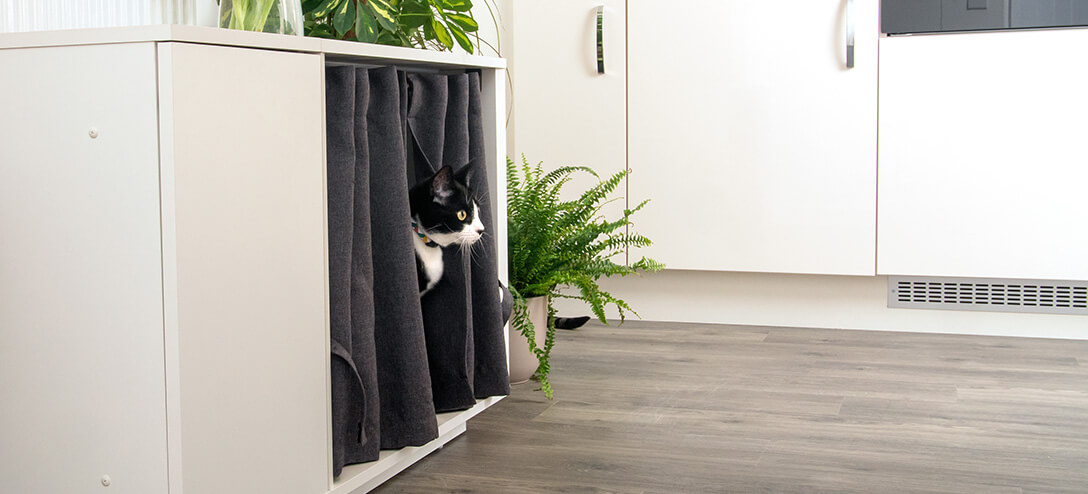
Cats are famous for several things. Independence, hunting and purring, for example. But intelligence? That’s a word more commonly handed out to dogs and parrots.
But that doesn’t mean cats aren’t smart. It’s simply that they don’t show off or shout about it. Under that cool exterior, there may be a lot of brain power.
So, do you have a feline Einstein, or more of a Tired Tom?
To find out how your pet’s grey matter measures up, we’ve put together this fun Cat IQ test. Put puss through her paces and see how she compares to the other brain-fit felines out there! Add up your results in the points column and share them with your friends!
The Omlet Cat IQ Test
1 . How old is your cat?
Less than 1 year
1-5 years
5-10 years
10-15 years
Older than 15
0
1
2
1
0
The years of peak feline fitness are matched by peak brain power.
2 . Does your cat respond to its name?
Yes
No
Sometimes
Yes – along with any other word I say!
3
1
2
1
No zero points here, as a cat that knows its own name may sometimes simply choose to ignore it!
3 . Does your cat sit in the middle of the street?
Often
Sometimes
Never
0
1
2
Basic knowledge of what constitutes a dangerous place is key to cat intelligence.
4 . Does your cat run out in front of cars?
Often
Occasionally
Never
We live away from busy roads, so it’s hard to tell
0
1
2
1
Awareness of danger sorts the smart cat from the not-so-smart.
5 . Does your cat stalk and kill small animals?
Often
Occasionally
Never
Hunts, but doesn’t usually catch anything
3
2
0
1
For a cat, a hunting brain equals a clever brain.
6 . What is your cat like around people?
Loves everyone
Likes family and friends, dislikes strangers
Seems scared of everyone
Has certain people she seems to hate
Doesn’t seem interested in anybody
1
3
1
2
0
A cat that can differentiate between people is a smart puss.
7 . How does your cat react when you come home?
Pleased to see you, rubbing and meowing
Comes to check who it is, but leaves it at that
No reaction (but make sure the cat’s actually in the house before reaching this conclusion!)
3
2
1
Bright cats will be pleased to see you.
8 . How does your pet respond to other cats in the neighbourhood?
In a friendly way
Cautiously
Aggressively
Submissively
Ignores them
1
3
2
1
0
Clever cats need to work out their place in the feline hierarchy.
9 . How does your cat respond to strange dogs?
Runs away
Stands its ground and hisses
Attacks
Ignores them
3
2
1
0
A smart puss knows an enemy when it sees one, and also knows when a fight isn’t worth it!
10 . Present your cat with food she’s not tried before. How does she react?
Refuses to eat it
Sniffs cautiously, possibly with an experimental bite
Eats happily
2
3
1
Not everything is edible, and a sensible cat will show a certain amount of caution.
11 . At feeding time, put an unopened tin of food next to the food bowl. What does the cat do?
Sits and looks at the tin, and then at you
Sniffs and/or rubs against the tin and meows
Examines the tin cautiously and then walks away
Shows no interest in the tin
3
2
1
0
Interaction with the tin suggests that the cat knows it contains food.
12 . Hold one of the cat’s favourite toys in front of her for a few seconds, and then hide it. Make sure your pet is watching as you do this. What does she then do?
Look for the toy, and find it
Look for the toy, but fail to find it
Remain sitting impassively
Walk away
3
2
0
1
Cats don’t always want to ‘play ball’, so it might be worth trying this one a few times before deciding on the result.
13 . Place a windup toy on the floor and let it ‘run’ under a chair, sofa, or other piece of furniture. What does your cat do?
Anticipates were it will emerge, either by moving there or simply watching the space
Looks at you expectantly
Gazes at the place where the toy first set off on its journey
Walks away
Looks away and takes no interest
4
3
2
1
1
A bright puss can deduce where the toy will emerge. But she might just not be in the mood!
14 . Put your shoes and coat on, as if you were about to leave. What is the cat’s reaction?
Meows or rubs against you
Goes to a window ledge to watch you leave
Seems uninterested, or walks away
2
3
1
Observant cats will recognise the clues that mean you’re about to leave the building.
15 . Has your cat learned to – or tried to – open doors, cupboards, windows, etc?
Yes
No
2
0
Clever cats watch and work it out, soon learning that things can be opened.
Scores
The smartest cats are thought to have an IQ equivalent to a 2- or 3-year-old human. How did yours do?
5-10 – Not-So-Cool Cat – Your pet barely has a claw on the IQ scale – less catnip and more training required!
11-19 – Tired Tom – Maybe your cat was feeling a bit lazy today… and every other day, come to that!
20-28 – Purrfect Puss – nothing wrong with this score, although if your cat keeps on looking and listening it might learn even more.
29-37 – Moggy Mastermind – your pet is well above the average when it comes to knowing how the world ticks.
38-42 – Feline Einstein – only a tiny percentage of cats are this clever!
This entry was posted in Cats on July 31st, 2019 by linnearask
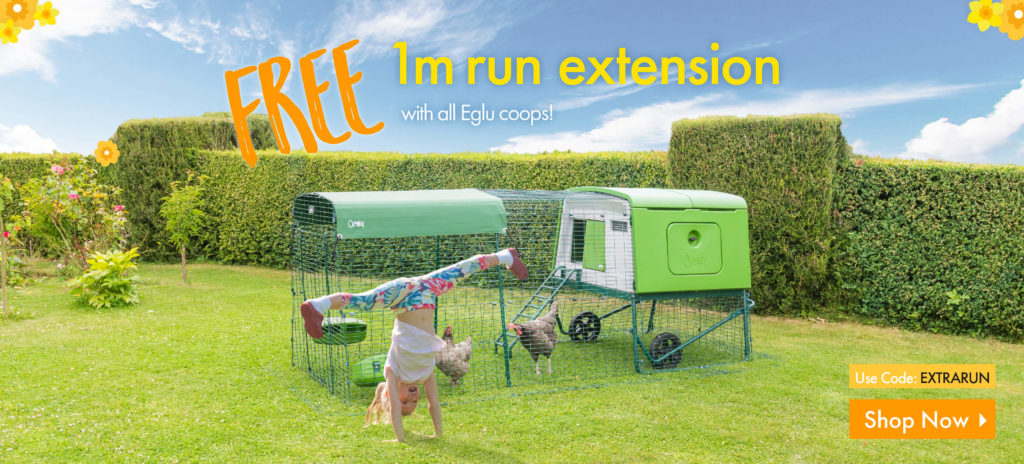
Start your chicken keeping journey the right way, with extra secure space for your chickens to enjoy at no extra cost to you in our July promotion.
Simply add any Eglu Chicken Coop with Run to your basket, enter discount code EXTRARUN, and the correct run extension for your chosen coop will be added to your order.
This means if you buy the best-selling Eglu Cube Chicken Coop with 2m run and wheels for £749, you will actually be getting the 3m run setup originally worth £849 – saving you £100!
Now your chickens can have extra run length to explore, roam around and stretch their legs, without the extra cost to you.
Terms and conditions
The Free Run Extension promotion is valid from 24/07/19 – midnight on 31/07/19 only. You must have an Eglu Chicken Coop with run in your basket. Enter discount code EXTRARUN at checkout, and a 1m run extension for your chosen coop will automatically be added to the basket. This promo code can not be used to discount your basket contents. Offer cannot be used on existing discounts or in conjunction with any other offer. Not redeemable on delivery charges. This offer is subject to availability. Omlet ltd. reserves the right to withdraw the offer at any point.
This entry was posted in Chickens on July 23rd, 2019 by linnearask
When we got our Miniature Schnauzer, we had already had a catflap in the back door for years. We soon realised that our little dog would easily also fit through the cat flap, and this would allow her to go in and out of the backyard whenever she liked. We decided to pin it open to see if she would even use it at all, and it turned out to be a hit. It worked perfectly and in the summer it was nice to have a light steady breeze from the door. But we all know, summer must come to an end one day. And it did.
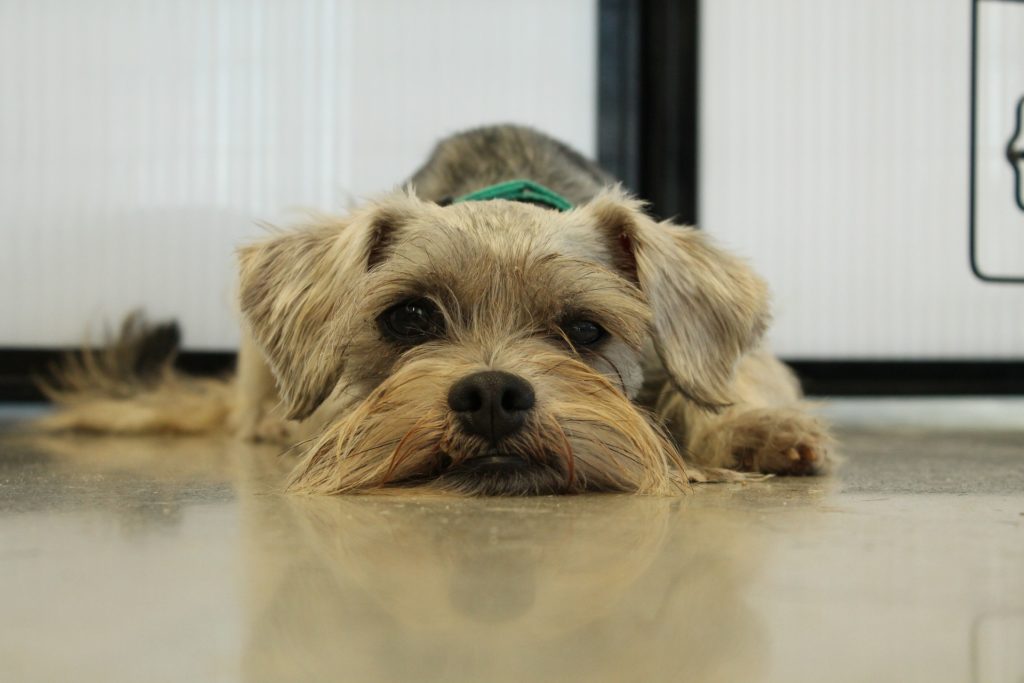
Winter came and with that freezing air blowing through the cat flap every day, all day. Unpinning the door meant having a sad little furry dog staring at it in disbelief “This used to be open all the time! Why is it locked now? And since when can the cat walk through walls?” The surprised look on our dogs face every time the cat appeared and vanished in the door was adorable and yet a little upsetting. How she wished to have the cats ability of passing through closed doors. And I wished that too. The comfort of going in and out whenever she wanted proved to make for a demanding dog, that needed help to open and close the door. Countless times a day.
Something had to change. As she didn’t understand how the door worked, we would have to show her and help her a little. I had used clicker training with other dogs before, and it was not only fun for me but also for the dog. Somehow we had never started training our newcomer with it, but now I dug out the clicker from the ominous corner drawer in the kitchen that hardly ever gets opened these days and made a plan.
Teaching my dog to use the cat flap!
My dog got the concept in a matter of hours and used the door by herself on the next day. Now she is young and very intelligent, but older dogs should also be able to learn this trick in no more than a few days.
Dog Clicker Training for flap doors – let’s get started.
Four essential things you need:
- A clicker
- Small dog treats or favourite toys
- A cat flap
- A dog (any dog will do…)
Clicker Training
If you’ve never heard about clicker training, then I will try to quickly introduce you to it. In short, clicker training conditions the dog through positive reinforcement to repeat certain behaviours. There is no such thing as active punishment in this training – “punishment” is shown in a passive manner by ignoring the dog. Dogs thrive on attention, they mostly don’t mind if it’s positive or negative attention – they often might not even be able to tell them apart. As long as their favourite humans interacts with them, that’s great news. Nothing is worse for a dog than being ignored. This is very useful when it comes to training.
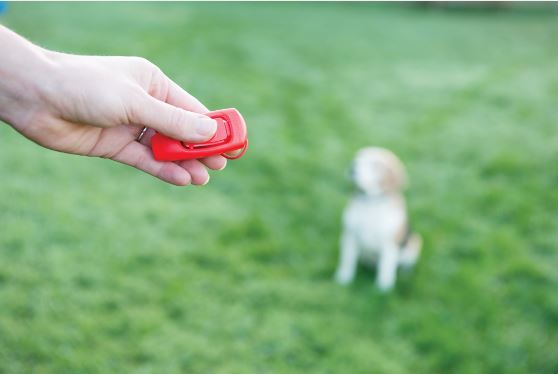
A click tells the dog “That’s exactly what I wanted you to do!”, then a treat follows. Click means treat – that is very important. Never click without it being followed by a treat – even if you click by accident. Click and treat go hand in hand. For most dogs, food treats work great, it is possible though to offer toys as a reward instead. Depending on the dog or the situation – I don’t take the clicker on walks for example, but I use the same method of “Do well and something good happens” to train my dog to, for example, stay sitting while I walk away. If she waits for my release command and comes running, we play with her toy. If she runs towards me without the command, we don’t play. That way she realises that, even though staying put might not be the most fun thing to do right now, but when that’s done, there are better things to come!
Step one
But let’s go back to the cat flap. If your dog already works with clickers, then great, skip this paragraph and read the next. For everyone who has never used a clicker with their dog, you will want to get your dog accustomed to the clicker, what it does, how it works and how he/she can actually “make it click” to get to that tasty treat.
I admit, I am very impatient and extremely lucky with my dog. I have done all this in fast forward mode, but generally it is best to take some time and be patient… Start with teaching your dog what the noise means. With your dog in the same room, click the Clicker. Your dog will most likely look up at the noise, but even if he doesn’t, make sure to click and immediately offer him a tasty, small treat.
Click again, give the treat.
Click again, give the treat. Repeat.
Click again – does your dog already look a little excited about the noise? Good, he is starting to realise that a treat follows the click every time he hears it.
This stage shouldn’t take long at all, and it’s soon time for the next step.
Step two
I thought about what skills the dog would need to open the door. To go through the door she would have to push it with her nose. So my next goal was to get her to touch the cat flap with her nose. The direct approach didn’t seem to be very successful, so I got a colourful Post-It note out of the cupboard. Maybe this isn’t necessary if you manage to make your dog touch the door with its nose. However, I wiggled the bright pink piece of paper in front of her nose and the first thing she does is give it a quick sniff. As soon as her nose touches the paper – CLICK! and treat.
Move a few steps away and show the paper, have the dog follow you, trying to touch the paper with its nose.
When the dog touches the paper reliably, you can now introduce a command such as “Touch” every time the dog does the action. Your dog will soon connect the motion of touching the paper with the word.
Keep this up until she touches the paper with her nose every time she sees the paper. Once this works well, phase three can begin – stick the Post-It on the flap door.
Step three
With the Post-It on the flap and the dog knowing the “touch” command, the next step was quite easy.
Ask your dog to touch the paper. Click when they do. Your dog might not push the door yet, so start to encourage him to touch it harder. Stop clicking if the nose only just touches it, instead click only when the dog put enough pressure on the door and the door slightly wiggles.
Does the door wiggle a little every time now? Great, then take away the click again until your dog starts to push the door harder.
This is a gradual process and encourages the dog to think about what you want it to do. When he figures it out himself, he learns a lot faster. Teach him gradually to not just make the door wiggle but to push so hard, that he has to stick his head through – at this point he will usually have realised that he can walk through as the door actually reveals what’s behind, and eventually you will be able to gradually change the slight door touching to actually walking through. Like magic!
Done!
My dog was finally able to make her way in and out of the house whenever she wanted – and we could finally take off the second layer of socks.
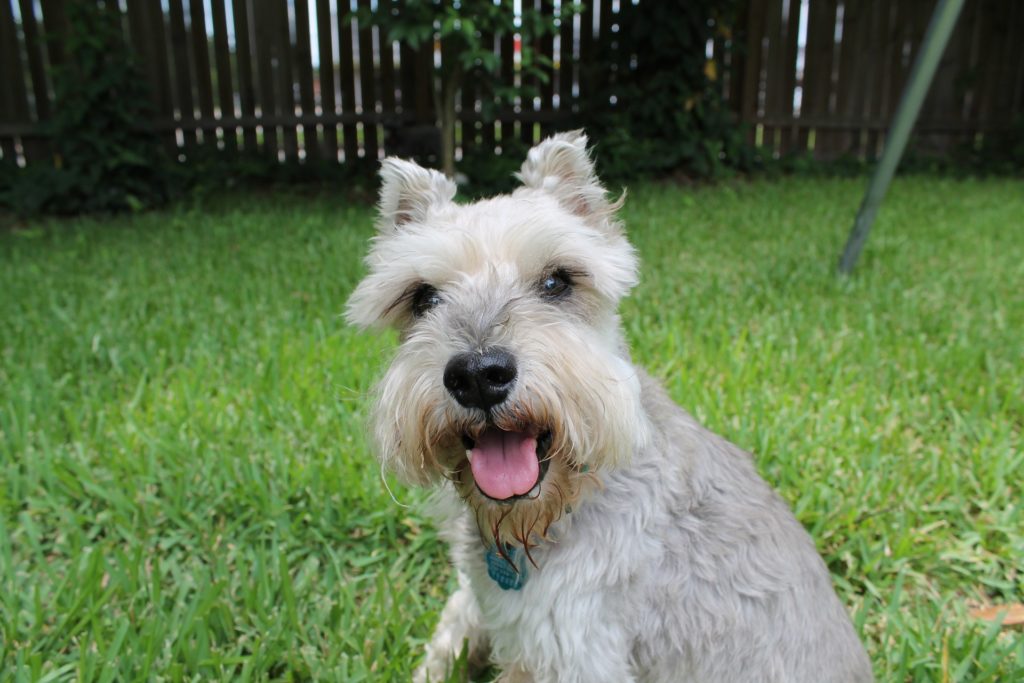
This entry was posted in Dogs on July 4th, 2019 by linnearask




